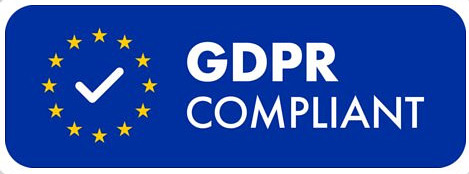Google’s page ranking algorithm analyzes various factors when ranking a page in the SERPs and SEOs don’t have influence over all of them. Although a website can never be perfect in Google’s eyes, we do have control over many factors that can boost a page’s ranking to address searchers’ queries. HTTP status codes are one such key element that is incredibly important for SEO and general website health. In this blog, we’ll look into what these HTTP status codes are and which of these codes have direct or indirect SEO implications.
What Are HTTP Status Codes?
An HTTP (Hypertext Transfer Protocol) status code is a three-digit response sent by a website’s server to the browser or search engine that made the request to indicate whether or not the request has been fulfilled. These status codes are part of the communication process between users and servers.
HTTP status codes are segmented into five different classes:
- 1xx Codes (Informational) – These codes are called informational status codes and do not have many SEO implications.
- 2xx Codes (Success) – These codes are success codes which show that the request to a server was successful.
- 3xx Codes (Redirection) – These are redirection codes that show to the browsers whether a page is redirected temporarily or permanently.
- 4xx Codes (Client Errors) – These are client error codes that show if some pages are not loading or are unavailable.
- 5xx Codes (Server Errors) – These codes show that there is a problem at the server level that prevents the request from being processed completely.
How Do These HTTP Status Codes Affect SEO?
One of the most obvious SEO markers for site health is status codes. Understanding status codes and how to use them correctly will assist you in swiftly diagnosing site errors and reducing downtime. It also indicates the initial stage of the browsing experience and it affects the page’s queue in the Google indexing pipeline, Google bot crawl rate, and ultimately SERP rankings.
Some of the most common status codes in SEO are as follows:
200 OK
The 200 status code is the ideal code for any webpage because it indicates successful requests. The HTTP status code 200 is the most crucial status code to know in the 2xx range from an SEO standpoint. When a server responds with the HTTP status code 200, it informs the client that the request was successfully received and provided the required content.
301 Moved Permanently
The use of 3xx redirects is critical for maintaining SEO value. A 301 redirect indicates that a resource has been moved permanently to a new location. In place of the specified source, the request and any subsequent requests must be routed to another URL. These are the status codes to use for any site migrations or other circumstances in which you need to permanently move SEO value from one URL to another. The use of 301 redirects is critical for the success of website migrations.
302 Found or Moved Temporarily
A redirection of 302 indicates that a resource has been temporarily relocated. Because the transferred URL’s popularity and relevance are not passed on to the destination URL due to its transitory nature, the rerouted URL will continue to rank rather than be consolidated. 302 redirects can also be viewed as 301 redirects by search engines after a significant amount of time. For instance, if you want to send users to a landing page for a short period of time, like a sale page, this redirect can be used. Once the sale is over, the 302 redirects can be removed.
404 Not Found
The 404 status code is arguably the most commonly seen status code. The 404 error means that the requested resource was not found, was unavailable, or could not be loaded. It appears when you click a broken link, such as when a page gets removed from a website, yet it is still linked to by other pages. As a result, the 404 page isn’t the issue; it’s the pages that are linked to it. 404 errors are also undesirable from the standpoint of user experience, as they lead to a dead end.
Some SEO implications include the fact that Googlebot recognizes that this page does not exist and should not be crawled. The page gets deindexed if it has already been indexed. Once a page is deindexed, any SEO benefits are lost. Google is very clear on this point: 404 errors are not a problem. They, on the other hand, prevent erroneous URLs from being regarded as legitimate pages on your site. As a result, the most typical approach for providing a better user experience is to design a custom 404 page that provides a friendly message that the page is not available and includes accessible connections to other essential pages on the website.
What’s more helpful is to remove reference of such links from the source URLs completely.
Also, there can be instances where some 404 error pages, which were previously working pages, may rank in the SERPs for some keywords. In such cases, these pages need to be redirected to relevant counterparts so that no traffic is lost in the process.
500 Server Error
When clients make valid requests, but servers are unable to fulfill them for any reason, 500 errors are returned. It’s possible that the website is overloaded or that it’s suspended for maintenance.
If search engines frequently receive 500 errors while crawling a page, they may believe the server can’t manage the volume of requests, and crawling will be slowed. This basically indicates they’re reducing the crawl budget. From an SEO standpoint, this isn’t ideal.
They can also demote or remove pages from the index if they believe the problems are continuing. Similar to 4xx problems, search engines strive to deliver a positive user experience, whereas 5xx errors interrupt a user’s search experience.
Conclusion
A website’s HTTP status codes play a significant role in SEO and search engines in general. Understanding the causes and effects of HTTP statuses is essential for improving user experience and reducing the number of errors that users and Google see. It makes problem diagnosis much quicker. To ensure that search engines properly index your website and that users can navigate through it easily, these errors must be corrected.









